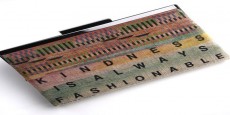Next time you’re home, look around your closet. Your attic. How many pairs of jeans do you have there, unworn for months, years, decades even? I have four. Aside from the ones you keep for “some day” when you’re skinny again or returning to fat, which ones of those could go? And where should they go? I’m betting your first thought was Salvation Army or some local version of such a thing. A commendable thought, but there’s a problem.
But there’s one problem.
The Bigger Cost of Donating Jeans
Where do those jeans go? If it’s not on the butt of somebody new in a certain amount of time, it may get shifted to another store. Or it may leapfrog that step and go straight overseas, most likely to Africa. A small profit may still be made, supporting Salvation Army and its efforts here, but a chain of events is also unfolding, causing damage at each step:Those jeans flew thousands of miles to get to their new destination. Then they may spend countless miles being distributed to regional hubs and then to vendors or perhaps directly to people. But that’s not even the worst of it. Flooding developing world markets with cheap clothing can decimate the local clothing companies. After all, why pay full price for local when you can get exotic, cheap clothing from another country?
Make Donating Jeans a Local Thing
What if your jeans went a different, much more local route?What if they were collected by your local grade school kids, your church, your community group, or even your industrious block committee? From there, they could be made into insulation , or given to somewhere like the East Bay Depot for Creative Reuse where they could serve as material for art projects, an inexpensive resource for cash starved grade schools.
But let’s be real here, without your own self incentive to find and donate to these groups, and the bigger picture awareness of the positive impact it will have, most people aren’t going to go out of their way to find a new home for their jeans. But what if there was an incentive in there, like our brigades, where people get paid per item collected? What if your jeans could be made into a bag?
Since jeans come in all shapes, colors, and sizes, this isn’t something that could be automated. It would require people. People that would get trained in a new skill. People that would now have new jobs, or expand on the one they already did. And the creation of those bags wouldn’t negatively effect struggling small businesses. Or would it? Know anybody who does this in the US?
Turning Old Jeans Into a New Product
In any case, as with everything else Terracycle makes, we would find a way to make them both stylish and affordable, available ubiquitously at Walmart or Target, for example. Now your jeans, and thousands of them would be saved from their moldy basement fate, reduce paper use when they’re used as shopping bags, divert raw materials from being used to make the equivalent bag, reduce emissions from transportation, and provide desperately needed new jobs.
Does this sound like a good idea to you?
Am I totally wrong about what happens to clothes donated to Salvation Army and others like it? Please update my knowledge if so. What other effective reuses of old clothing on a mass scale have you seen?
HIT FROM: TREEHUGGER.COM













